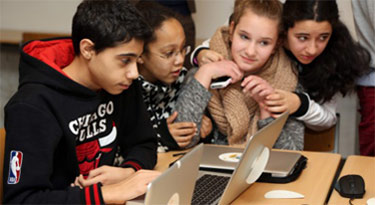Cyber Safety for Kids

The internet is an incredible tool. It provides an opportunity to communicate, learn, playand be entertained by content from around the world. It’s vibrant, incredibly varied and offers information on any topic at a click of the mouseWhile the internet provides many positives there are also risks. Cyber bullying, inappropriatecontact, identity theft, scams and exposure toadult content can make the internet a risky place for children. The risks exist for all children, from pre-schools who are only starting to use a computer, to more experienced teens, and also adults.
Studies into children and young people’s online behavior indicate that they use the internet toundertake a wide range of activities. These include using it for research as well as a range of social,gaming and learning activities.
Advantages of Social Media:
- Social skills. Social networking allows people to keep up with current friends and make new ones. When used in the right way, social media can increase self-esteem and help someone feel less isolated.
- Independence and self-expression. Creating your own “home page” allows people to express themselves and discuss their interests. They can join groups and support fan pages, and find out about other people’s interests.
- Digital competence. Technology is evolving faster than ever before. As teens and young adults learn to adapt to new technologies (or new applications of existing technologies), they will be better equipped to adapt to future technology.
- Educational development. Young adults in secondary and post-secondary education will often use social networking to discuss schoolwork and share discussions about assignments.
- Research. Young adults can gather information about topics that are hard to discuss with others,such as drug use and sexual health
Risks of Social Networking:

- Sharing one's personal information with the wrong crowd. Young adults need to be aware that information given out online could also put them at risk of victimization. People looking to do harm could use posted information to identify them or gain their trust. They can also be deceptive by pretending to know a young person. Encourage young people to privatize their online social networking accounts (such as Facebook and Twitter).
- Bullying. Harassment may occur online only (cyberbullying), or it may spill over to offline bullyingcommitted by a person who has located his victim online. Cyberbullying can cause significantemotional harm resulting in depression, anger, school avoidance, violence, and suicide.
- The permanency of online profiles. Once information has been shared on the Internet, it's outthere — forever! Retrieving information that others have read and captured is nearly impossible.
- Inappropriate pictures, captions, and comments could come back to haunt youth as they start applying to colleges or looking for jobs.
- Disclosure. People tend to be far bolder and less discretionary with information shared onlineversus in person. This means there is a greater risk of giving out information including the presence of a disability that, given a second thought, we might not have wanted to disclose.
- Additional potential risks for youth with disabilities: Social networking may further isolate those who may already feel isolated or not included, and can ultimately lead to depression andloneliness. Also, young adults with disabilities must make important life decisions regarding disclosure of their disability (if, how, when, and to whom). Unintended disclosure is possible by posting pictures or becoming fans of disability support groups, for example. While this might not be an issue, it makes the "disclosure" discussion even more important. Its important to know the pros and cons of cyber networks and how to deal with it if you r a victim of it.
